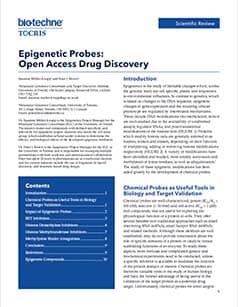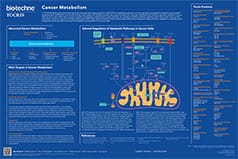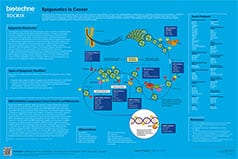Ack1
Activated Cdc42-associated kinase 1 (Ack1, E.C. 2.7.10.2), also known as TNK2, is a 114 kDa member of the Ack family of mammalian non-receptor tyrosine kinases (NRTKs) which is activated by multiple receptor tyrosine kinases (RTKs) to perform various roles within the cell.
Ack1 Inhibitors |
|
|---|---|
| Cat. No. | Product Name / Activity |
| 4946 | AIM 100 |
| Potent and selective Ack1 (TNK2) inhibitor | |
| 5310 | ASP 3026 |
| Potent Ack (TNK2) inhibitor; also inhibits anaplastic lymphoma kinase (ALK) | |
| 5607 | GNF 7 |
| Ack1 and GCK inhibitor; inhibits Ras signaling | |
Activated Cdc42-associated kinase 1 (Ack1, E.C. 2.7.10.2), also known as TNK2, is a 114 kDa member of the Ack family of mammalian non-receptor tyrosine kinases (NRTKs) which is activated by multiple receptor tyrosine kinases (RTKs) to perform various roles within the cell.
Ack1 is present in all cell types however it is more abundant in spleen, thymus and brain tissue. It was first identified as an inhibitor of the GTPase activity of GTP-bound Cdc42, but it also promotes cell survival via the phosphorylation of several effector proteins, such as the androgen receptor (AR) and protein kinase B (Akt). The kinase activity of Ack1 is regulated via the post-translational modification of several tyrosine residues. Ack1 is activated by growth factor binding and by homodimerization induced by cell adhesion.
In addition to a catalytic kinase domain, Ack1 contains seven other domains, which are important for substrate recognition, regulation of enzymatic activity, cellular localization and protein-protein interactions. Members of the Ack family are unique in that they are the only tyrosine kinases to have a CRIB domain, for interaction with Cdc42, and an SH3 domain C-terminal to the kinase domain. This complex domain structure results in a functionally diverse protein.
Mutations in the Ack1-encoding TNK2 gene have been linked to cancer, although overexpression and deregulation of Ack1 activation are more commonly associated with disease. Upregulation of Ack1 is associated with increased tumor invasion and recurrence of a number of different cancers, including hormone-refactory prostate cancer. In addition, its function as a regulator of transcription can promote growth of tamoxifen-resistant breast cancer. Ack1 has therefore become a target of cancer research which has shown that inhibitors of Ack1 can induce cancer cell apoptosis.
External sources of pharmacological information for Ack1 :
Literature for Ack1
Tocris offers the following scientific literature for Ack1 to showcase our products. We invite you to request* your copy today!
*Please note that Tocris will only send literature to established scientific business / institute addresses.
Epigenetics Scientific Review
Written by Susanne Müller-Knapp and Peter J. Brown, this review gives an overview of the development of chemical probes for epigenetic targets, as well as the impact of these tool compounds being made available to the scientific community. In addition, their biological effects are also discussed. Epigenetic compounds available from Tocris are listed.
Cancer Metabolism Poster
This poster summarizes the main metabolic pathways in cancer cells and highlights potential targets for cancer therapeutics. Genetic changes and epigenetic modifications in cancer cells alter the regulation of cellular metabolic pathways providing potential cancer therapeutic targets.
Epigenetics in Cancer Poster
This poster summarizes the main epigenetic targets in cancer. The dysregulation of epigenetic modifications has been shown to result in oncogenesis and cancer progression. Unlike genetic mutations, epigenetic alterations are considered to be reversible and thus make promising therapeutic targets.


